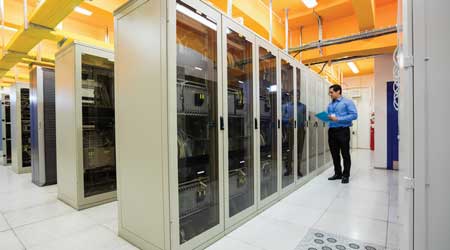 To plan for emergency cooling, managers need to understand the needs of key areas, such as data centers.
To plan for emergency cooling, managers need to understand the needs of key areas, such as data centers.Ensuring Emergency Cooling Equipment Suits Facilities
Manufacturers offer updates and guidance to help managers make savvy choices of drain cleaning equipment
In selecting emergency cooling equipment, managers can avoid missteps by carefully considering the physical size of the unit. Emergency cooling units range in size from half-height refrigerators to units that take up an entire tractor trailer. If the units will be installed inside a facility, managers must make sure installers can move the unit to its intended location. If the unit will be located outside the facility, sufficient space must be available.
Managers also need to consider noise and vibrations. Small, portable cooling units are self-contained. Their fans and compressors make more noise than a conventional cooling system or a window unit, but workers can position them so they will have little impact on operations. Larger units mounted outside a building tend to generate high levels of noise, and so managers must be certain they are carefully positioned to avoid interfering with operations.
Most large systems are rented. For smaller and mid-sized systems, managers have the option of renting or purchasing the units. Most facilities use a combination of both equipment options. Generally, managers purchase smaller, portable units that their facilities are more likely to require frequently.
While this is the most convenient and lowest-cost option, it does present a danger. It is not uncommon to find that someone borrows the unit for a particular application but never returns the unit. To prevent them from disappearing, managers must implement strict controls on the use of the units.
When renting emergency cooling units, managers should take time to make the arrangements well in advance, not when the need arises. This issue is particularly important when the situation involves larger units that might not be readily available. Managers will have to ensure that any contracts with equipment providers identify not only the specifics of the unit that is to be rented but also for the party that is responsible for delivery, installation, connection, service and removal. Advance planning will prevent wasted time trying to find a unit, and it will minimize the disruption in operations.
James Piper, P.E., is a national consultant based in Bowie, Md. He has more than 35 years of experience in facilities maintenance, engineering and management issues.
Related Topics:














